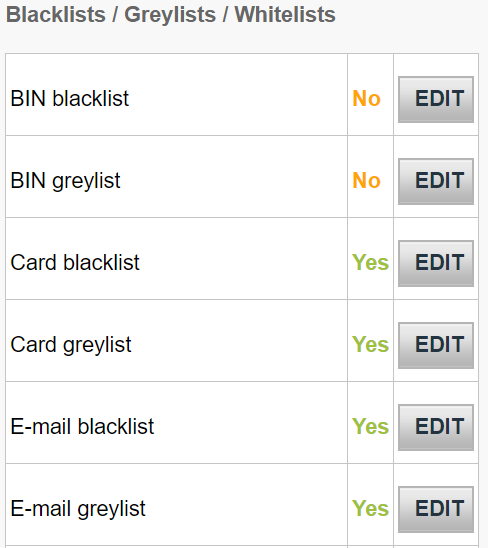Handy Info On Selecting Credit Card Apps
Wiki Article
What Is Considered Suspicious Behaviour And How Can It Cause The Removal Of A Credit Card?
A variety of actions or behaviors could be suspect and result in the credit card to be blocked or flagged. Examples of suspicious behaviour include:- Unusual Buying Patterns
A sudden increase in expenditure or large transactions in comparison to normal behaviour of a cardholder can raise suspicion.
Unrecognized Transactions
Fraud could be apparent If you observe the transactions you see on your statement that are not familiar or unauthorised and that the cardholder is not able to agree with.
Multiple Declined Transactions
A string of failed or declined transactions within a relatively brief timeframe can indicate a problem, especially when the transaction history of the cardholder generally is positive.
Geographic Anomalies
A number of transactions over the space of a few minutes from geographical locations that are away from the typical spending zone for cardholders or from places which are vastly different from their normal spending zones can cause suspicion.
Abnormal Purchase Types
Purchases that are unusual, particularly for high-value items that are not consistent with the habits of the cardholder's spend could be deemed suspicious.
Uncommon Online Behavior
Unusual online behavior, including several failed login attempts and a change to account information, or suspicious login attempts, could indicate an intrusion that is not authorized.
Unusual Card Use
It is possible that a card was used in a manner that's not consistent with its usual usage, for example, in the event that it was used to make international purchases even though the card was mostly used locally.
Unexpected Cash Advances and Transfers
The large amount of cash advance or transfer that aren't typical for the person who is using the card can cause alerts.
Transactions that are frequently not authorised by a card
An increase in transactions made using a card that is not present (online or by phone) without any previous transaction history could signal an indication of fraud.
Identity Verification Problems
The difficulty of verifying a person who is the cardholder's identifier during transactions, particularly in situations where verification is needed could result in suspicion.
These kinds of behaviors, in addition to others, may cause the card issuer's fraud detection or monitoring systems and prompt them to investigate and potentially stop the card temporarily until the cardholder's identity is established or the legitimacy of the transactions can be verified.

What Does It Signify That My Credit Cards Are On A List Of Blacklisted?
If a debit or credit card is placed on a"blacklist", it is a sign that certain transactions are temporarily prohibited until the issue is addressed or verified. There are many different reasons why a credit card might be placed on a blacklist.
Blocking the card to protect yourself is a possibility if there are suspicions of fraud.
Security Concerns In the event of indications of a breach (unauthorized access or data breaches that involve cards, or unusual spending patterns), the card can be flagged to protect.
Identity Verification Issues: If a cardholder is unable to verify their identity, it can temporarily disable the card temporarily. This can happen when there are additional verification requirements.
Lost or Stolen CardIf the card has been reported lost or stolen by the card holder, the issuer could apply a block to the card to block unauthorized use until a new card is issued.
Suspicious Indicators: Any activity or activity related to the credit card that raises an suspicion, such as numerous declined transactions (or geographic anomalies) or unusual patterns of spending or unusual geographical locations that could result in the blocking.
Cardholders might be prohibited from making purchases or to access credit if they are listed on a blacklist. This is until the issuer of the card can verify the legitimacy or address any concerns relating to fraud or security. It is essential for the person who holds the card to contact the issuer promptly to resolve the issue, confirm transactions, and resolve any potential security concerns related to the card.
![]()
Cybersecurity Experts Detect And Monitor Cyber Threats Such As Stolen Credit Cards.
Security experts use a variety of strategies, tools, and methods to monitor and detect cyber-attacks that may compromise credit card data. The following are some of the more common methods.
Information from a variety of sources, such as forums, threat intelligence feeds, dark web monitoring, and security advisories, to stay informed about the latest threats and weaknesses.
Network Monitoring & Intrusion Detection
Monitoring network traffic using specialized tools and software, looking for unusual or suspicious behaviour that may indicate an unauthorised access to data or breach of.
Assessments of vulnerability and testing for penetration-
Conducting periodic assessments to find weaknesses. Penetration tests simulate attacks in order to detect vulnerabilities and assess the security of an organization.
Security Information and Event Management Systems (SIEMs)
Implementing SIEMs that analyze and consolidate log data (from firewalls or servers, applications, and firewalls) in order to recognize the source of security issues, track them, and respond immediately to security incidents.
Behavioral Analytics
Utilizing behavioral analysis to identify odd patterns or variations from the normal behavior of users within networks or systems. This could indicate a possible breach.
Threat Hunting-
The identification of potential threats is done by analyzing logs, data traffic and system information.
Endpoint Security Solutions
Utilize endpoint security (such anti-malware software, endpoint detection, and response tools, etc.) to protect the devices as well as your endpoints from malicious activities.
Encryption of Data and Data Protection
Implementing encryption techniques to protect sensitive information, such as credit cards when it is transmitted and stored it will lower the likelihood that data breaches occur.
Incident response and Forensics
Implementing an incident response plan will allow you to quickly respond to emergencies. Conducting forensics in order to identify the consequences and quantify them of security breach.
Cybersecurity experts combine these strategies with a solid understanding of the latest regulations and best practices to recognize, limit and respond quickly to cyber-related threats. Monitoring continuously, threat intelligence and a proactive approach to security are essential to maintain an effective defense against cyber threats. View the recommended savastan0 for more examples.
